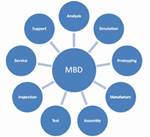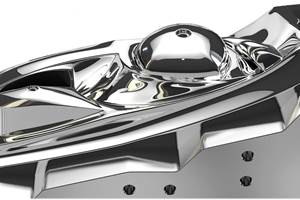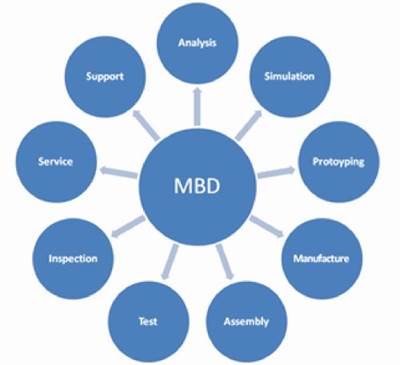Essential Strategies for Mold Measurement
Studies shed light on the importance of clear measurement approaches, skills and behavior.
The moldmaking industry is no stranger to measurement technology ranging from hand tools to fixed CMMs to portable metrology solutions such as articulating arms. Often, there are factors on the shop floor that impact scanning, probing or taking point-to-point measurements on a mold. Lighting, vibration, temperature and surface features of the measured part all can influence the measurement results.
Innovations in measuring technologies, interfaces and software have opened the door to expanded usage on the shop floor of a variety of operations, from checking tool integrity to verifying shrinkage of a part to first-article inspections. Another important application is the reverse engineering of original molds that may not have a CAD counterpart.
A moldmaker is typically not a metrologist—a professional who specializes in the science of measurement. However, knowledge of CAD and a keen understanding of metrology solutions are the building blocks to effective dimensional control. Software that enables step-by-step inspection programs and CAD-to-part comparisons can help to quickly and visually identify deviations during part production. And the Coordinate Metrology Society (CMS) also has a trick or two up its sleeve that can put an operator on the right track to accurate measurements.
Measurement Studies
When evaluating any measurement, it is important to make good decisions based on the quality of the data achieved. How can we achieve this in today’s modern world of 3D technology? To start, we must have confidence in the measurement process, the technology and, of course, the person taking the measurements. The CMS is working to address key issues in each area that are crucial to all industrial sectors.
Since 2010, the organization has conducted measurement studies at its annual Coordinate Metrology Systems Conference (CMSC). Each year, the theme changes to address different issues essential to good measurement practices, and focuses on both the metrology equipment and the individual undertaking a measurement task.
The first measurement study in 2010 focused on hand tools and the importance of good measurement practices and questioning. In 2011, the focus moved to how behavior when using portable 3D coordinate measuring equipment impacts measurement. In 2012, the study centered on the importance of practical testing when using portable coordinate measuring equipment, and last year the study delved into non-contact scanning and emphasized how data is affected by the decisions operators make.
Overall, each study looked at the main drivers that support good measurement practice. For example, when trying to measure a mold, the individual acquiring the data needs to evaluate the appropriateness of the equipment type and the environmental conditions. The operator needs to understand the design requirements and best-practice measurement techniques. Overall, the operator must be able to ask the right questions about the mold and then select the appropriate measurement method to achieve the required level of accuracy.
Study Findings
CMS studies have repeatedly uncovered important issues related to measurement practices, including lack of questioning about work and preparation requirements, setup and work area arrangement, measurement equipment and accessories, the lab or shopfloor environment, blueprint requirements (when specified), practice measurement techniques, and analysis of the final output.
In general, the studies revealed that core behavior needed to achieve successful measurement results did not always happen, and many essential elements of the process were taken for granted. Questions were not asked, so mistakes were made, resulting in large variations in the ensuing data.
Last year, CMSC conference delegates were invited to participate in a 3D coordinate measurement study on how decisions made when interpreting data influence the results. The study covered such aspects as design intent, setup, tolerances, analysis and reporting, as well as good-practice and behavioral observations. Some participant observations were very detailed and relevant to everyday measurements associated with moldmaking and other industrial sectors. They included information on:
• Design intent (datum and tolerances)
• Accuracy (relationship between the tolerance values and the available equipment)
• Confidence in the measurement strategy
• Required output (internally and for the customer)
• Confidence in the analysis and results
• Necessary software parameters and settings.
When measuring molds, prismatic parts and freeform shapes, there are several key questions that must be answered. In the 2013 measurement study, pre-measurement checks were monitored for each participant and included these important questions:
1. What are the temperature effects?
2. Is the equipment calibrated?
3. Are the accessories calibrated?
4. What are the accuracy requirements?
5. What is the repeatability of the equipment?
6. What is purpose of the measurement?
Measurement Strategy
Good, sound measurement strategies must be in place to support mold building, manufacturing and assembly processes. The 2013 study highlighted the following points as fundamental to supporting a good measurement strategy:
• Don’t assume.
• Ask questions.
• Both when measuring and analysing data, knowledge is needed to make informed choices.
• Repeat any doubtful calculations.
• Question how the environment may affect equipment and subsequent measurement results.
• Be careful to make informed calculations.
• Ask questions about device, setup, part alignment and tolerance requirements.
• Don’t underestimate the importance of decision-making when measuring or analyzing data.
Related Content
What is Scientific Maintenance? Part 2
Part two of this three-part series explains specific data that toolrooms must collect, analyze and use to truly advance to a scientific maintenance culture where you can measure real data and drive decisions.
Read MoreThe Ins and Outs of Hot Runner Temperature Control
A training checklist that explains the why and how of proper hot runner temperature control and system management.
Read MoreQuestions and Considerations Before Sending Your Mold Out for Service
Communication is essential for proper polishing, hot runner manifold cleaning, mold repair, laser engraving and laser welding services.
Read MoreHow to Achieve the Best Mold Finish
A look at factors that impact the polishability of tool steels and recommendations for obtaining a high-gloss finish.
Read MoreRead Next
Providing Intelligence Back to the CAD Model
Inspection software can help 3D CAD, 3D GD&T and measuring devices work together to ensure design intent.
Read MoreHow to Use Strategic Planning Tools, Data to Manage the Human Side of Business
Q&A with Marion Wells, MMT EAB member and founder of Human Asset Management.
Read MoreAre You a Moldmaker Considering 3D Printing? Consider the 3D Printing Workshop at NPE2024
Presentations will cover 3D printing for mold tooling, material innovation, product development, bridge production and full-scale, high-volume additive manufacturing.
Read More




















